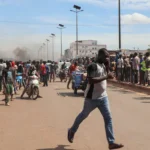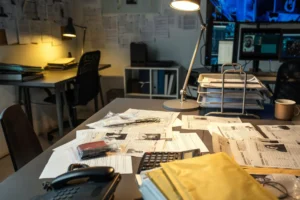For centuries, Arab nations led the world in the pursuit of knowledge and in scientific innovation and were among the most economically advanced places on Earth. Today, the Middle East and North Africa—nations with diverse political and economic landscapes—are at a crossroads. Recent decades saw major changes, including the Arab Spring uprisings, and not enough change, particularly in transforming economies to fulfill citizens’ demands for better lives. Several countries are mired in political instability and conflict. Debt levels in others are alarmingly high.
Stability and social cohesion are ultimately at stake. Youth unemployment in the region is among the highest in the world. More than 100 million hopeful young people will join the workforce over the next 10 years, all anxious to be included. Progress will be limited if women do not have opportunities to succeed. The economic challenge is not merely technical—it is profoundly political. With economic leaders gathering soon in Marrakech, Morocco, for the IMF and World Bank Annual Meetings, this issue of Finance & Development explores how the Arab world can tap growth opportunities and rebuild its economic standing.
“It’s time to rethink the engines of economic growth,” say the IMF’s Jihad Azour and Taline Koranchelian. State-dominated activity will be hard to sustain. Some economies must secure durable and equitable growth while brightening youth job prospects and taking full advantage of the human capital women offer. True transformation, Azour and Koranchelian say, requires a more transparent and accountable public sector, modernized economic institutions, greater private enterprise, and more responsiveness to the global energy transition.
To ensure success, each country must build support for and “own” their reform program, says Jordan’s finance minister Mohamad Al-Ississ, not least to help overcome resistance to change. Other contributors advocate removing barriers to equality, challenging social norms, and confronting entrenched interests. Modernizing banking and trade can play an important role. That requires lifting business and investment barriers, within the region and globally, write Nasser Saidi and Aathira Prasad.They show how the Gulf states—with their existing global links, increasingly diversified economies, and investment in trade infrastructure—can lead the way for the region.
Digital finance has great potential to drive financial inclusion and economic growth, says Atlantic Council’s Amjad Ahmad. He lays out policy reforms to create a competitive banking sector and attract venture capital for fintech start-ups. Clearly, global and regional forces are also at play. Changing US engagement, China’s growing influence, and other regional political alignments represent a generational shift in geopolitics, writes Vali Nasr of the Johns Hopkins University’s School of Advanced International Studies. This will, he reckons, unlock new possibilities for the region.
Elsewhere in this issue, Rania Al-Mashat, Egypt’s minister of international cooperation,, calls for equitable access to climate financing. We feature three women entrepreneurs driving positive change in the region. And we profile Minouche Shafik, a leading economist whose career spans public policy and academia. Though the region’s challenges may be great, so are the potential and dynamism of its people and economic leaders. This is a historically critical time for bold action and creative thinking about the Arab world’s future. And perhaps a chance to turn their legacy into their destiny. As for the F&D team, we decided it was time for some boldness and creativity here in our own pages. With this print issue [pdf], we present our redesign to enhance the reader’s experience with clearer visual delineation of sections. I hope this creates a stronger and more recognizable brand for F&D as we continue to communicate thought leadership through each issue.
Source: IMF BLOG
















